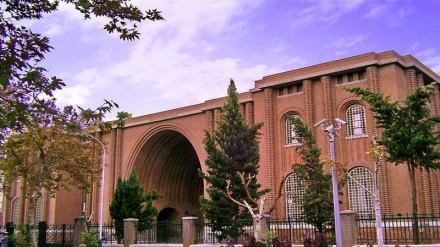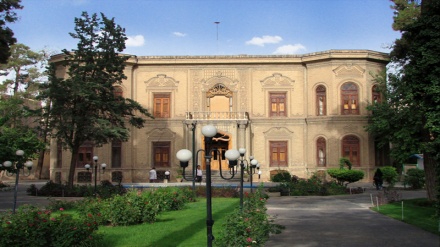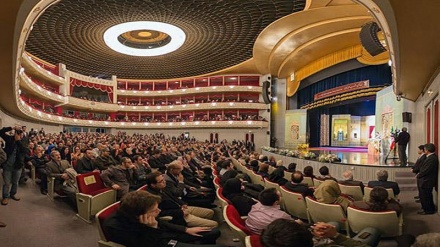Iran your attractive destination (215)
Today, we become familiar with Tehran’s Metro Network.
Tehran, as one of the large cities in the world, and a city which is home to many tourist attraction sites, is faced with traffic jams. In fact, one of the age-old problems of this city is traffic congestions in downtown. Meanwhile, given the twelve million inner-city journeys in Tehran by the residents of this macro city, per day, traffic congestions are inevitable.
The ever-increasing growth of city of Tehran in recent decades, coupled with the population growth, has induced the need for establishment of a fast, safe, and well-developed transportation system in this metropolitan city. This need is further emphasized because a rise in the number of vehicles, in addition to causing air pollution and noise, squanders the precious time of passengers across this city. All and all, these reasons led the officials to establish a subway network in Tehran. Metro refers to a fast transportation system, which has been completely or partly constructed underground with a number of lines, consisting of accessible tube stations that make it possible to transport commuters within the city.
The history behind construction of Tehran’s railway network dates back to nearly 120 years ago. The formation of Tehran’s tramway system was one of the concessions granted by the Qajarid King, Naser Ed-Din Shah, to Baron Julius de Reuter. Thereafter, Belgian engineers constructed a railroad between Shahr-e Rayy gateway and one of the well-known squares of that time, referred to as Hor Square that operated till the year 1952 AD. Upon the expansion of the city of Tehran and development of many highways in the next years, all comprehensive studies which were carried out to solve this city’s traffic jams led to the proposal of construction of subway network and usage of fast inner-city trains.
In the year 1975 AD, Tehran’s Urban Railway Company was established for establishment and launch of subway lines. Based on a body of research, eight subway lines were taken into consideration for Tehran. Upon the conclusion of a deal with a French company, the preliminary measures were taken for construction of this Metro Network.
Upon the victory of Iran’s Islamic Revolution, the content of the agreement with this French company was studied, and the principles and general goals of this contract were found to violate Islamic Republic of Iran’s national interests. Thus, the protocol related to this agreement was annulled.
In the year 1985 AD, upon the studies conducted by Iranian experts, a plan for construction of Tehran’s subway system was approved.
Up until the year 2015 AD, Tehran’s subway system served travelers with four inner-city, and one outer-city lines.
The first line stretches 39 kilometers, and maintains 29 tube stations, connecting Tajrish Square in northern Tehran to Kahrizak tube station in southern Tehran.
The second line is 24 kilometers in length, consisting of 22 tube stations, connecting east Tehran to west Tehran.
The third line stretches 37 kilometers, and is comprised of 14 subway stations, linking northeast Tehran to southwest Tehran.
Moreover, the 4th line stretches 21 kilometers and is comprised of 18 subway stations, connecting southeast Tehran to west Tehran. Meanwhile, the possibility of expansion of all of Tehran’s Metro lines has been taken into consideration.
Tehran’s 5th underground line is an intra-rcity line, linking west Tehran to Alborz Province. It is one of Tehran’s main subway lines. This metro line stretches 43 kilometers, linking Tehran to the city of Karaj.
The most important feature of this line is that all of its stations are located on the ground, and the passengers can view the surrounding scenic landscapes.
Based on the latest studies, Tehran’s ordinary subway lines are scheduled to stand at eight in numbers. In the year 2004, Tehran’s Islamic City Council issued a license for construction of the remaining subway lines, including 6th, 7th, 8th and 9th lines, while the Traffic High Council approved the construction of 6th and 7th tube lines; and tied the construction of 8th and 9th lines to implementation of comprehensive studies on Tehran’s railway system. The construction of the 6th and 7th lines is underway.
The 6th subway line stretches 31 kilometers, linking Dolatabad Highway to the Town of Kan. The 7th line stretches 27 kilometers, linking Hejrat Highway to Sa’adat Abad District. The 8th line stretches 26 kilometers, connecting Ashrafi Isfahani Highway to Basij Square, while the 9th line extends 26 kilometers, connecting Pounak to Basij Square.
The design of all of Tehran’s subway stations have been carried out by Iranian consulting engineers. Efforts have been made to use the best construction materials throughout these tube stations.
The beautiful, advanced, and large subway stations of Tehran capture the attention of any newcomer. These tube stations have been designed and constructed based on a blend of Iranian traditional architecture and modern architecture. The construction materials used are fireproof, shatterproof, and resistant against chemicals, erosion, and moisture.
Meanwhile, necessary precautions have also been taken into account for provision of safety at tube stations.
Currently, Tehran’s subway system has turned into a reality. The design and construction of Tehran’s subway system marks a defining phase in the development projects of the post-revolution era, manifesting the sublime talents, qualifications, vast know-how and advanced technology of Iranian experts.
MR/ME


